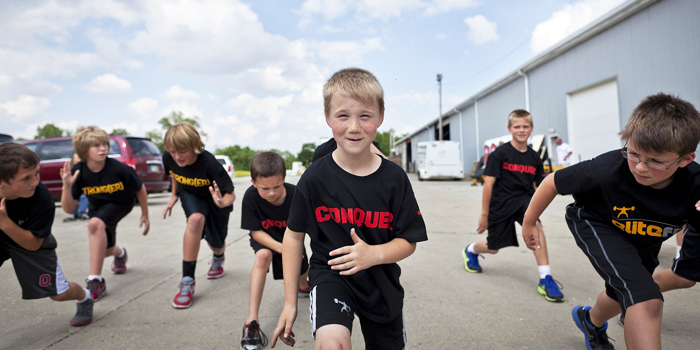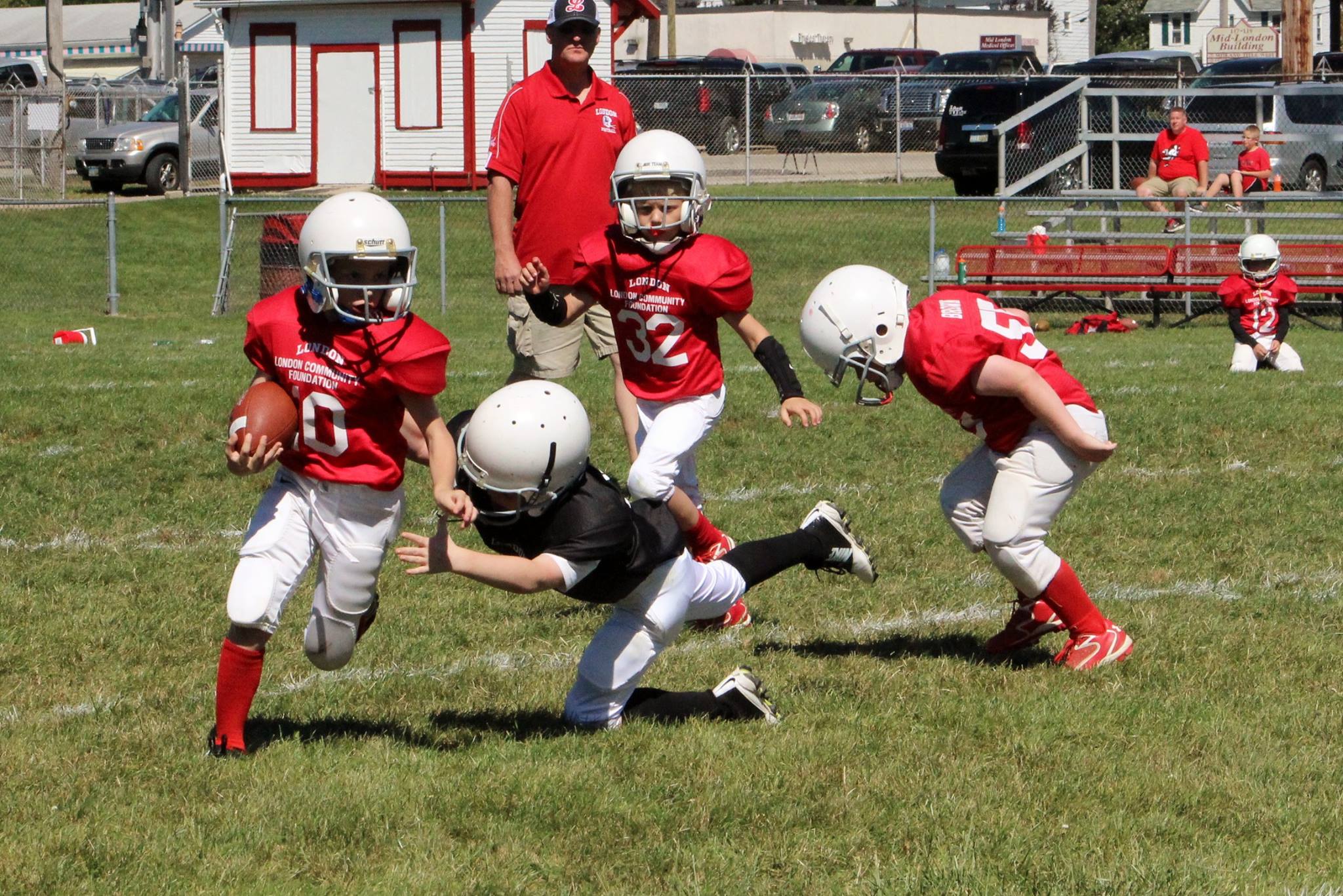
Too often today we see parents and coaches that try to force their kids to specialize in one sport before having a basic foundation of athletic skills. There is so much emphasis on sport specific skills that fundamentals are lost in the shuffle. The coaches either lack the knowledge of where to begin training youth athletes, or they just don’t have the time.
This program is designed to provide basic fundamental movement skills for youth athletes. As long as you remember that strength, speed, conditioning, flexibility, mobility, spatial awareness, body control and other foundational skills are the base your athletic pyramid should be built on, you can train your athletes to be successful at a variety of sports.
This is a sample one-week program that touches on various aspects that a young athlete should master over the course of the next few years.
Day 1 — Linear Speed Focus
Warm-Up
- Bodyweight Squats 3x10
- Jumping Jacks 3x10
- Cross Jacks 3x10
- Skip 2x20 yards
- Shuffle 2x20 yards
- Backwards Run 2x20 yards
- Bear Crawl (and other various animal crawls), 6 movements for 10-15 yards each
Technical Work
- Arm Action, 3-4 sets
- Knee Drives Against the Wall, 4-5 sets
Drills
- Knee Drives/High Knees with band around waist, 2-3 sets
- Starts from a two-point stance, running over 4-5 mini hurdles, 3-4 sets
Games
- Tennis Ball Drop and Sprint
- Relay Race
- Red Light, Green Light
MORE: How to Use Fundamental Movements to Develop Youth Athletes
Day 2 — Strength and Conditioning Focus
Warm-Up
- Jump Rope 3-4 sets of 30 seconds
- Bodyweight Squats 3x10
- Dynamic Stretches: Hamstring, Quad, Hip Flexor, Glute, Lunge Walks, Calf/Achilles
Strength
- Medicine Ball Drills: Chest Pass, Overhead Pass, Underhand Toss for Height, Backwards Toss, Overhead Slams, Sit-ups, Pushups, Squats
Sleds
- Forward Drag
- Backward Drag
- Double-Arm Row
- Hand -Over-Hand Pull
Conditioning
- Battling Ropes
- Sled Push
- Ball Slams
- High Knees through Ladder
- Sandbag Carry
Photo courtesy of Chris Whitacre
Day 3 — Changing Direction/Agility Focus
Warm-Up
- Bodyweight Squats 3x10
- Jumping Jacks 3x10
- Cross Jacks 3x10
- Skip 2x20 yards
- Shuffle 2x20 yards
- Backwards Run 2x20 yards
- Bear Crawl (and other various animal crawls), 6 movements for 10-15 yards each
Technical Work
Ladders
- Single-Leg Hops
- Two-Feet Hops
- Hopscotch
- Icky Shuffle
- In, In, Out, Out
- Speed Skaters
- Hockey Stops
Drills
Patterned Change of Direction Drills (non-reactive): Shuffle with hockey stop (5 yards), Forward run with hockey stop (5 yards), Shuffle back and forth (10 seconds), then sprint
Games
- Reactive Direction Change (voice commands and hand gestures)
- Mirror Drill
RELATED: How To Develop Strength in Untrained Children
Day 4 — Strength and Conditioning Focus
- Bodyweight Squats 3x10
- Dynamic Stretches: Hamstring, Quad, Hip flexor, Glute, Lunge walks, Calf/Achilles
- Various Animal Crawls, 4-6 exercises for 10-15 yards each
Strongman Course
- Atlas Stones (lift med ball on high plyo box)
- Farmers Walk (with kettlebells)
- Tractor Pull (hand over hand pull with sled)
- Chain Drag (drag a chain walking backwards)
- Sprint 40 yards
Cool Down
- Glute Bridges
- Fire Hydrants
- Planks
Day 5 — Variety/ Fun Day
Warm-Up
- Jump Rope 3-4 sets of 30 seconds
- Dynamic Stretches
Recap Linear and Changing Direction Day
Create a variety of games and activities that build on the skills learned throughout the week.
Finish with a game of:
- Soccer
- Kickball
- Dodgeball
- Cone Dodgeball (knock down opponents cones)
- Shark in the Water
- Spud
Notes: Technical drills like arm action and wall drives are debated as to whether or not they are very effective in improving an athlete’s speed. In my opinion, with what I’ve seen over the years with young athletes ages 7 to 12, is that these simple drills help to give them visual and spatial cues as to what their body should be doing. While the arm may not stay at a specific angle during sprinting, it will get them out of the bad habit they are currently doing of having the arms cross the body or not using their arms at all. The same holds true for the wall drives. While the skill may not be 100% transferrable, it allows us to get the athletes into a good knee drive/ dorsiflexed position repeatedly. We are also strengthening the midsection by having them hold that position. As the athlete gets older, stronger and more specific, then you can begin to utilize different drills.










